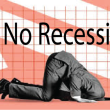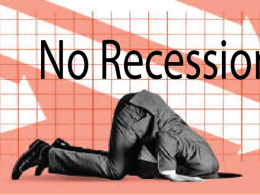by Andrew Pease, Chief Global Strategist, Russell Investments
Canada grappling with impact of virus outbreak and oil price decline.
The twin shocks of the COVID-19 outbreak and the collapse in the price of oil has complicated what was already a lackluster outlook for the Canadian economy. Canadian equities, as of March 18, have declined 29% from peak levels on February 19, 2020 and have all but priced in a highly probable technical recession.
However, all may not be lost. Policy makers have been actively responding to the escalating risks emanating from the virus and oil price shock. The Bank of Canada (BoC) has responded by reducing interest rates 100 basis points (bps), bringing its target rate to 0.75%. We believe there will be additional easing this year, with the target rate eventually reverting to the global financial crisis low of 0.25%. The central bank has also announced various other measures aimed at improving the functioning of funding and credit markets. The federal government, importantly, has announced a CAD $82 billion stimulus package1, or roughly 4% of gross domestic product (GDP), aimed at supporting businesses and households. This should be welcome news, particularly for the ailing energy sector and indebted households.
The energy sector was still recovering from the 2014/15 bear market in oil prices and now finds itself in an eerily similar predicament. The escalating price war between Russia and Saudi Arabia could not have occurred at a worse time.
The other major source of concern is the vulnerability of highly indebted households. Canadian households have been binging on cheap money over the entirety of this business cycle. Prior to the 2008/09 Global Financial Crisis, Canadian household debt to GDP stood at 83.0%; as of the third quarter of 2019, it had soared to 101.7% . With the economy humming along and interest rates low and stable, this debt has been manageable. That math will be tested going forward. Yes, financing conditions will ease as the BoC brings the target rate towards the zero-lower bound. But this factor is offset by potentially rising unemployment and/or a weakened consumer.
A technical recession, commonly defined as two consecutive quarters of negative GDP growth, is likely, and risks pushing 2020 GDP growth to something significantly below our conservative estimate of 1.0%.
While the impairment to growth due to the coronavirus and the collapse in the price of oil will be meaningful, there is a clear sense of urgency, not just from Canadian, but global fiscal and monetary authorities, to present a strong coordinated response as was done in the Global Financial Crisis.
Canadian Market Observations:
Canadian Equity
Canadian equities have underperformed global equities by roughly 500bps since the start of the market rout on February 20, 2020. The dual shock from the virus and the collapse in the price of oil hit the domestic bourse particularly hard. Our cycle-value-sentiment process now has us gradually leaning into riskier assets.
The business cycle is challenged as discussed above, however the coordinated initial response from Canada’s fiscal and monetary authorities has been encouraging. Moreover, the domestic stimulus will be complemented by global efforts. Valuations have also improved, though further downside to already reduced earnings expectations is likely. Finally, we believe sentiment has started to reflect investor panic. For instance, the relative strength index, which measures short-term momentum of equity prices, signals temporarily oversold conditions. While we are acutely aware of the potential for further downside risks, we also realize that none of us can perfectly time the markets. Our process is designed to lean in and out, not swing for the fences. Our process has us leaning in.
Bond Yields
Concerns around negative yields in North America have been percolating with rapidly declining bond yields and central banks rushing towards the zero-lower bound (ZLB). While the anxiety is understandable, we place very low odds on that outcome. Central bank governors from both the Bank of Canada and US Federal Reserve have expressed a certain degree of skepticism toward negative policy rates. Frankly the experience from Europe does not instill confidence. A negative policy rate stresses the financial sector and can hinder the pace at which the economy eventually recovers. There is the possibility than in an extreme risk-off environment where indiscriminate bond buying ensues, yields could be driven below zero, even with a positive policy rate. That said, we assign a low probability to that scenario.
Canadian Dollar
In our annual outlook we set our fair-value range for the CAD/USD exchange rate at 0.71-0.77. Our fair value range has intentionally been more conservative relative to the fair-value (FV) derived from purchasing power parity (PPP ). Based on this measure, the implied level is closer to 0.80: a far cry from current levels and well below the mid-point of fair value range. Nonetheless, PPP does have merit as a valuation gauge and can be useful during times of heightened currency volatility to determine the bands within which a currency can move. The chart below illustrates this. It highlights how PPP levels will change over time but are generally stable relative to the actual change in the CAD/USD FX (foreign exchange) rate. This stability makes it a guidepost for longer-term fair value and can also operate as a proxy from which to determine price-bands. The chart illustrates that most of the time, the CAD/USD exchange rate fluctuates around +/-10% of the PPP implied levels, however in extreme scenarios, it has drifted toward +/-20%. Bottom line is that given the uncertainty around the Canadian economy, it is not a surprise that the CAD/USD exchange rate has not only dipped below the low end of our FV range but also below the -10% PPP levels as of March 17, 2020. A move to -20% would imply an exchange rate of roughly 0.64. While not our expectation it does serve as a guide to the potential.
1https://pm.gc.ca/en/news/news-releases/2020/03/18/prime-minister-announces-more-support-workers-and-businesses-through
2Statistics Canada
3 Purchasing power parity states that exchange rates between currencies are in equilibrium when their purchasing power is the same in different regions by comparing the prices of a specific good/goods in those regions
Copyright © Russell Investments

















